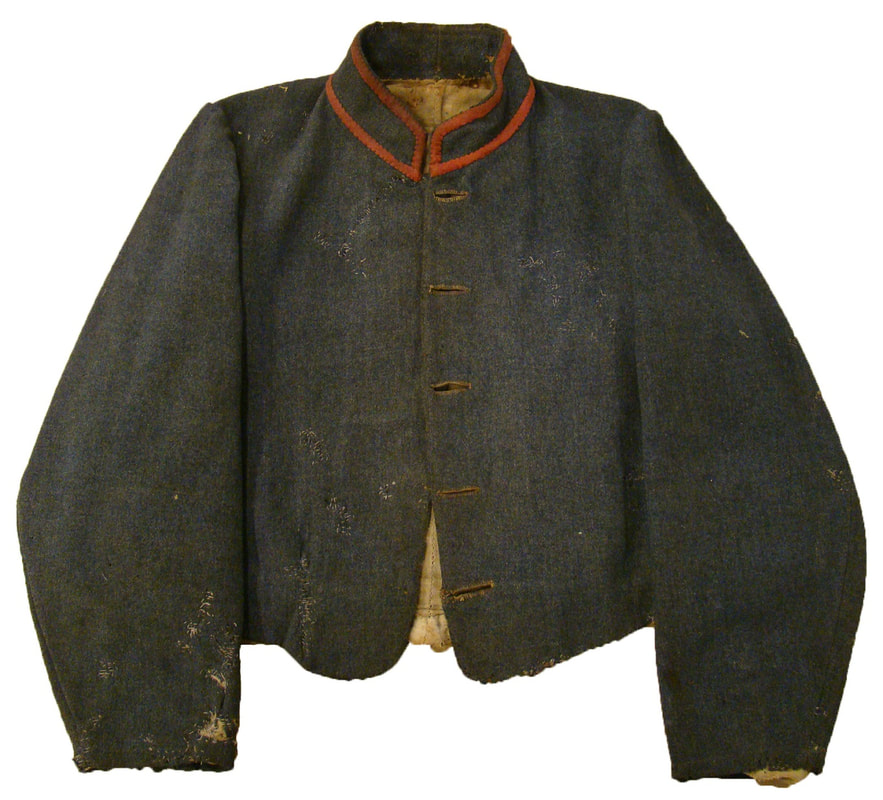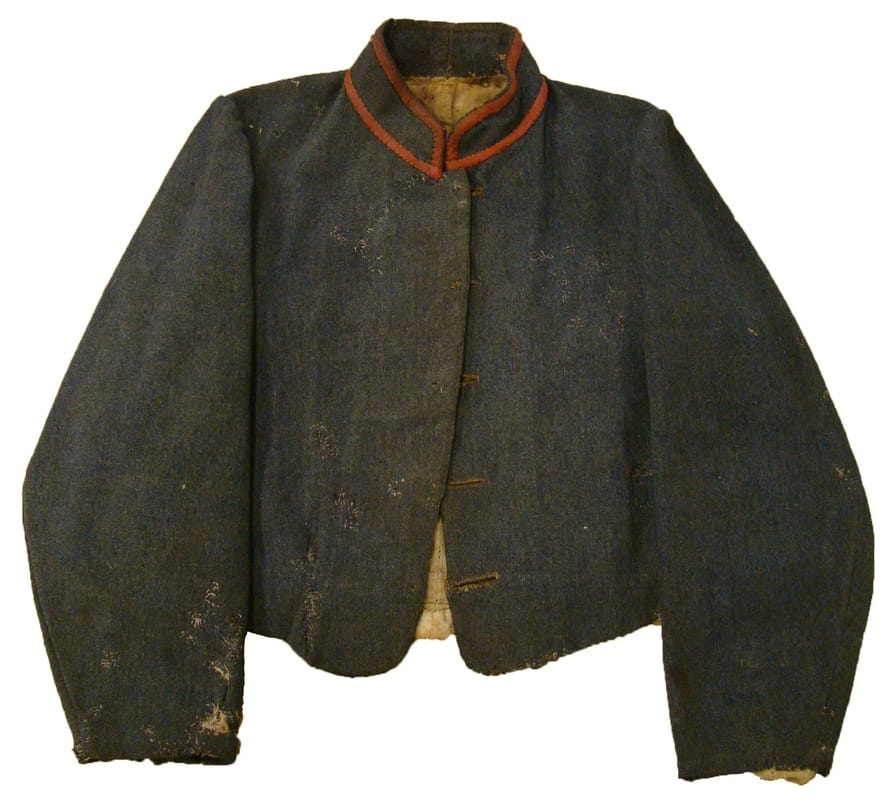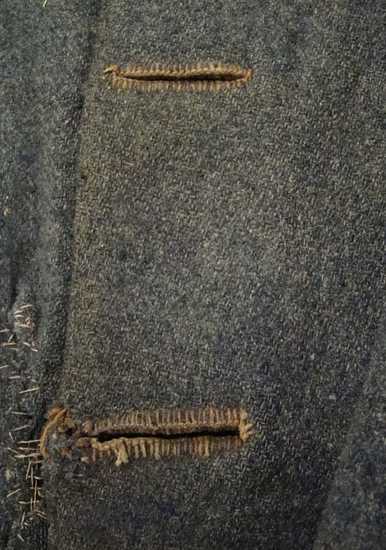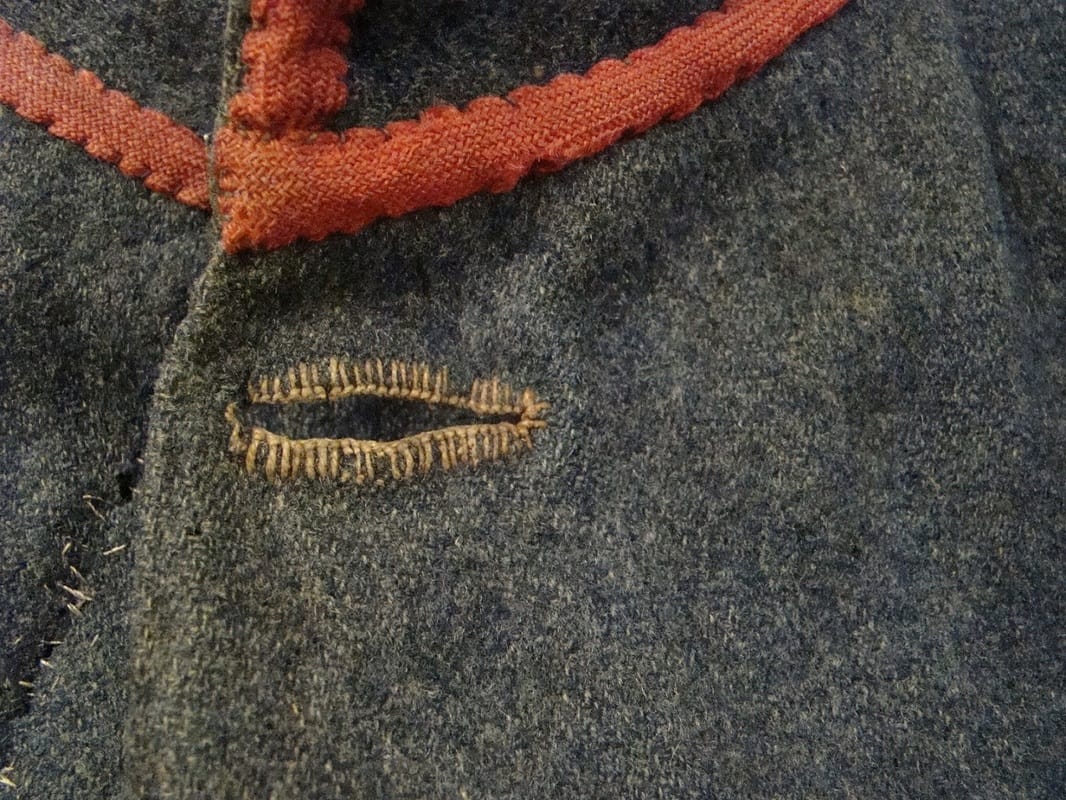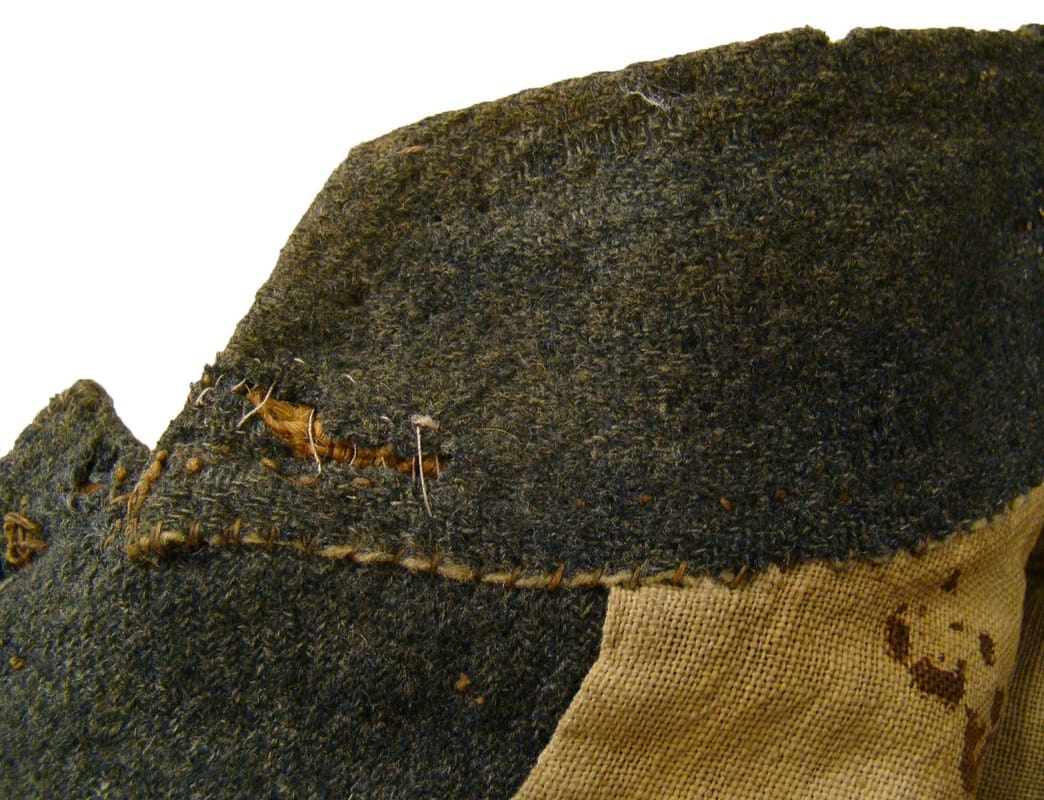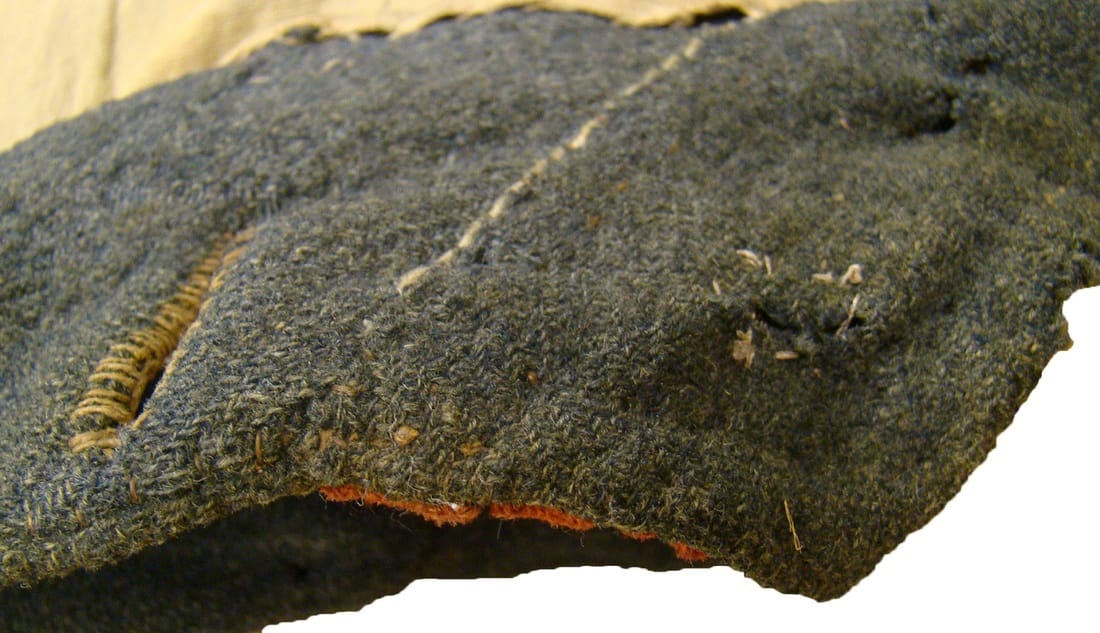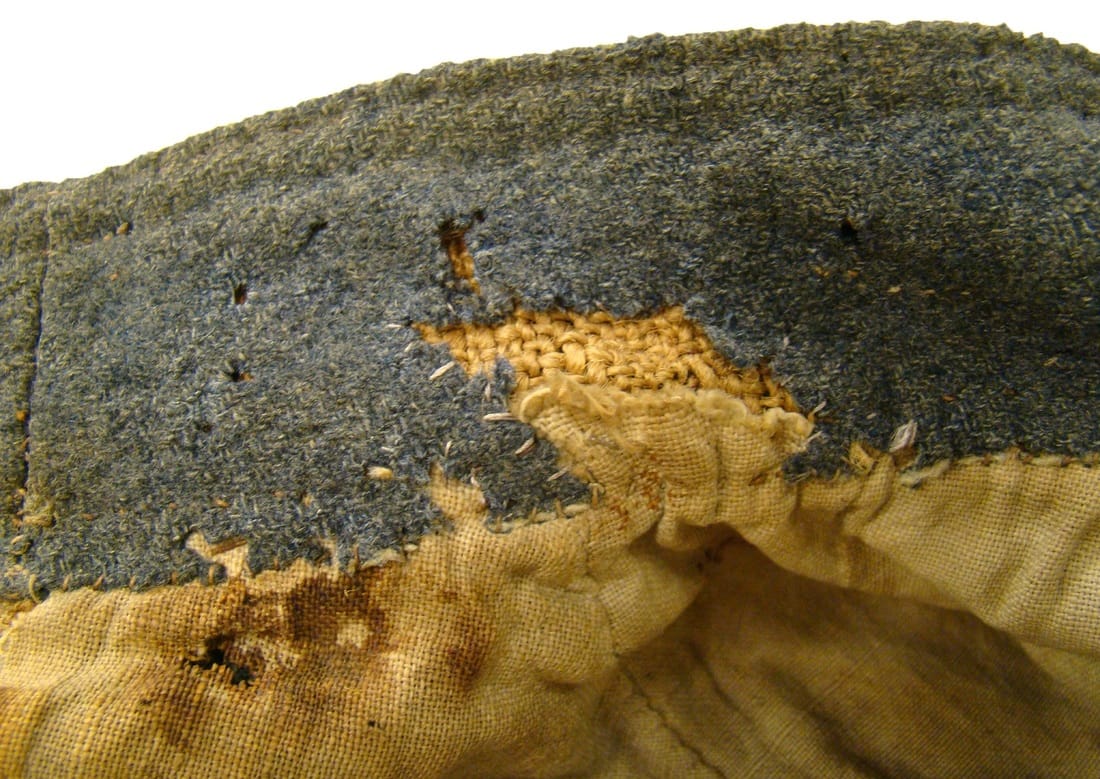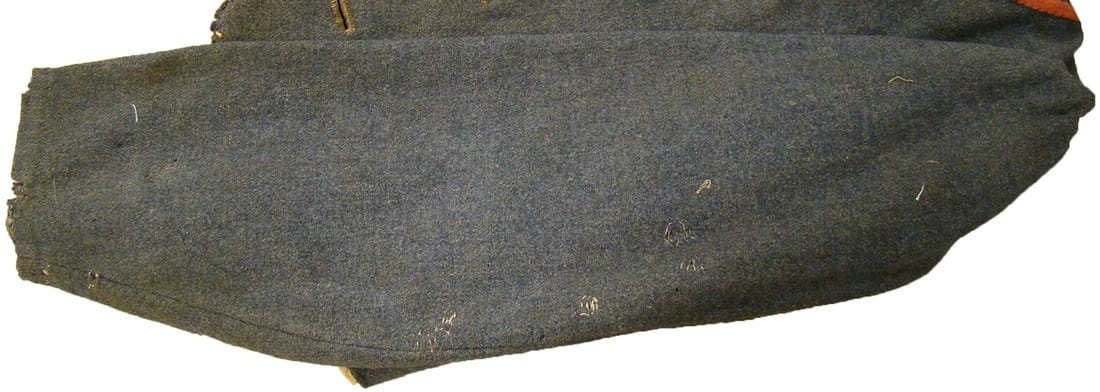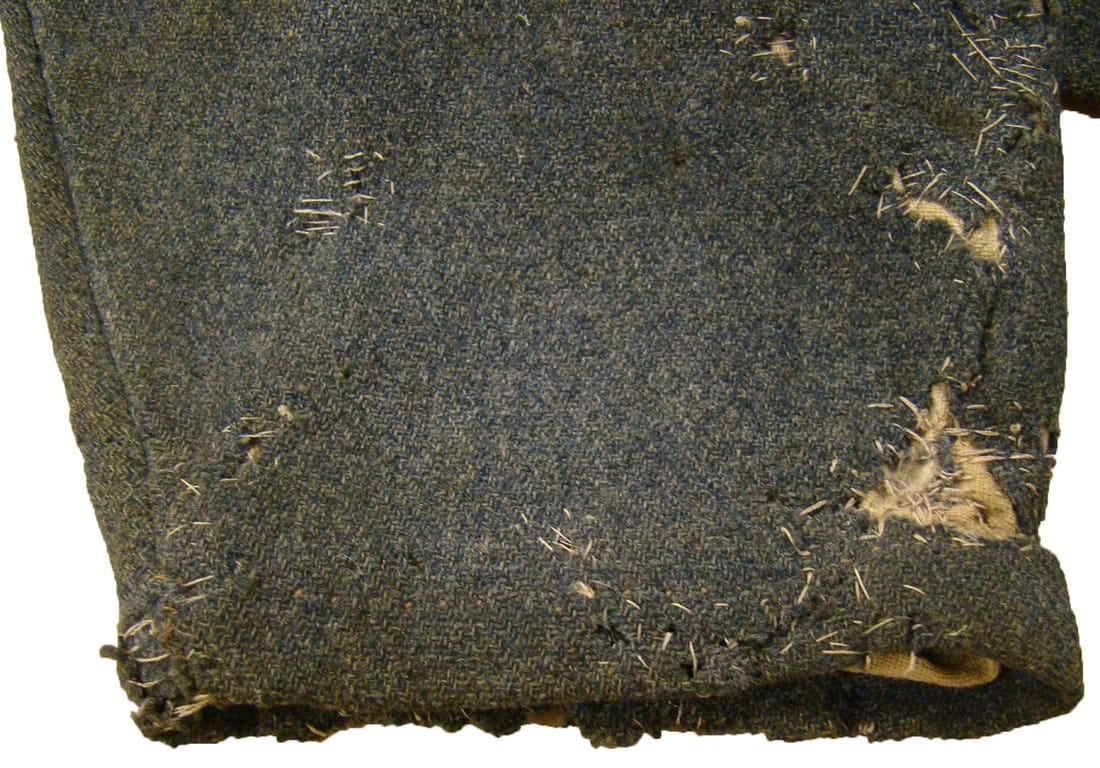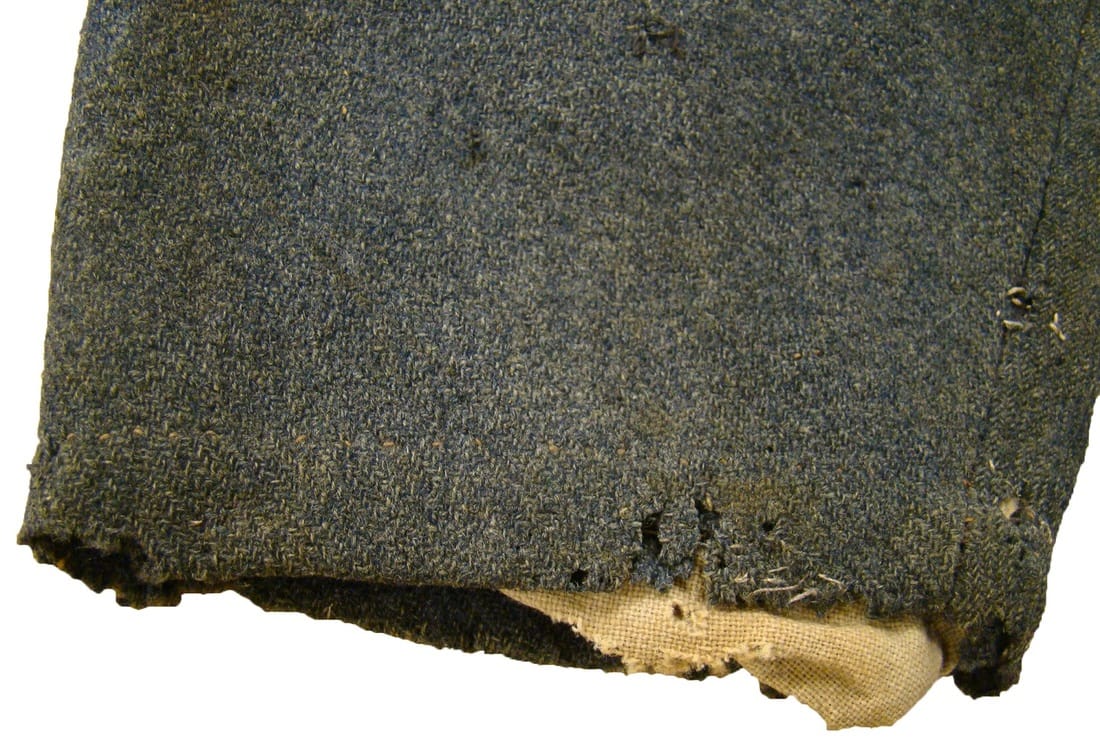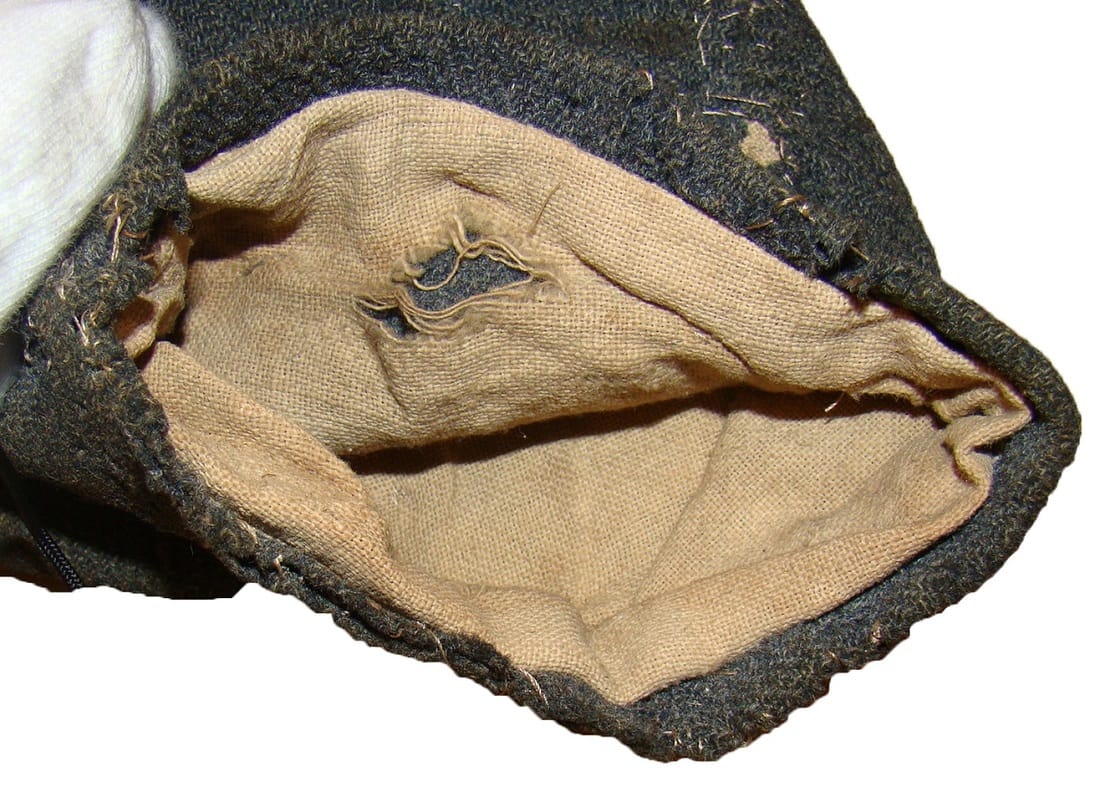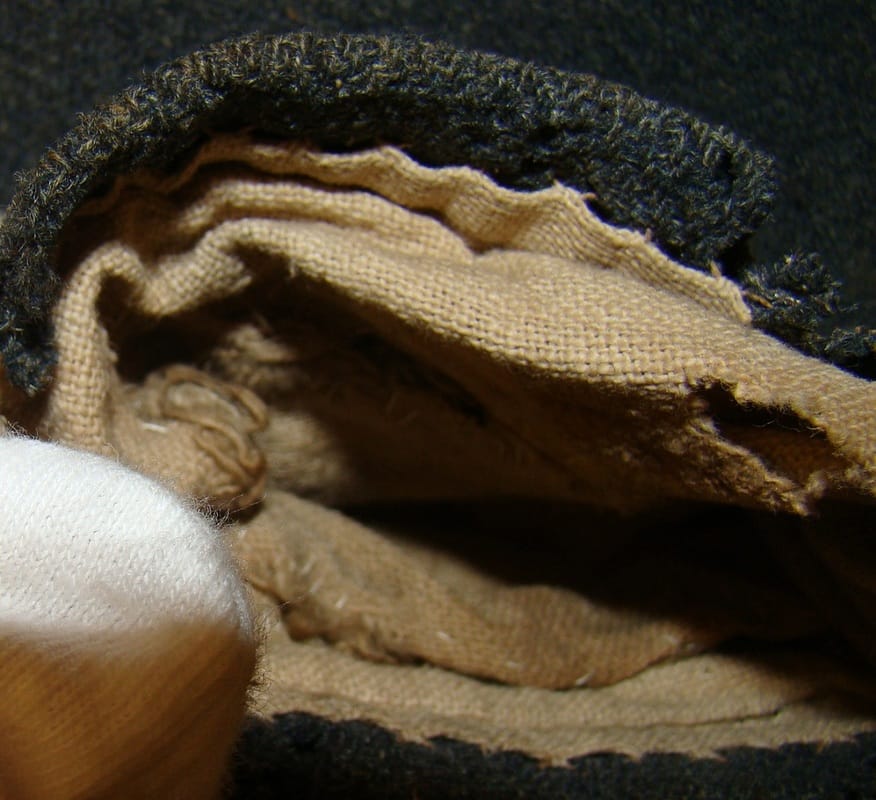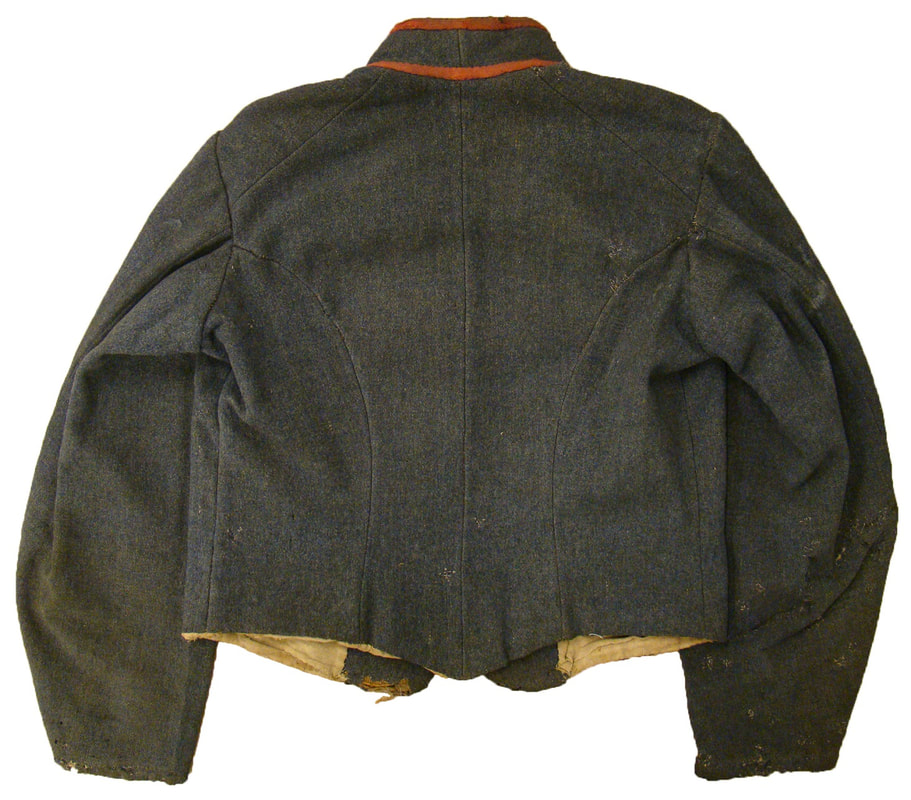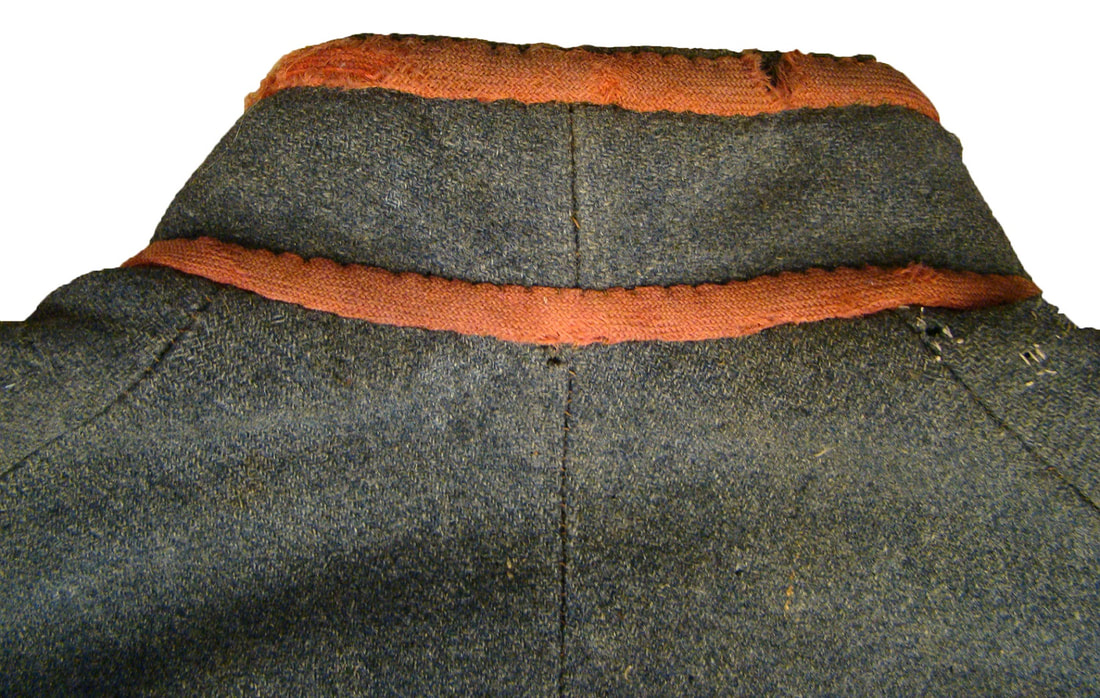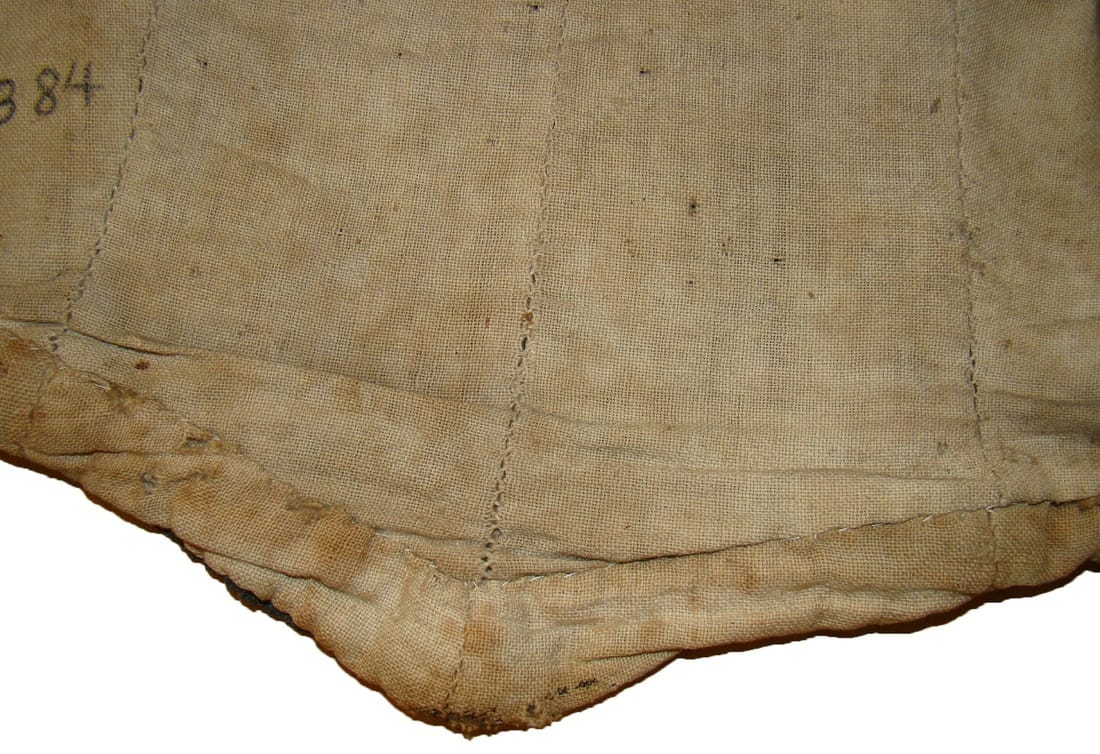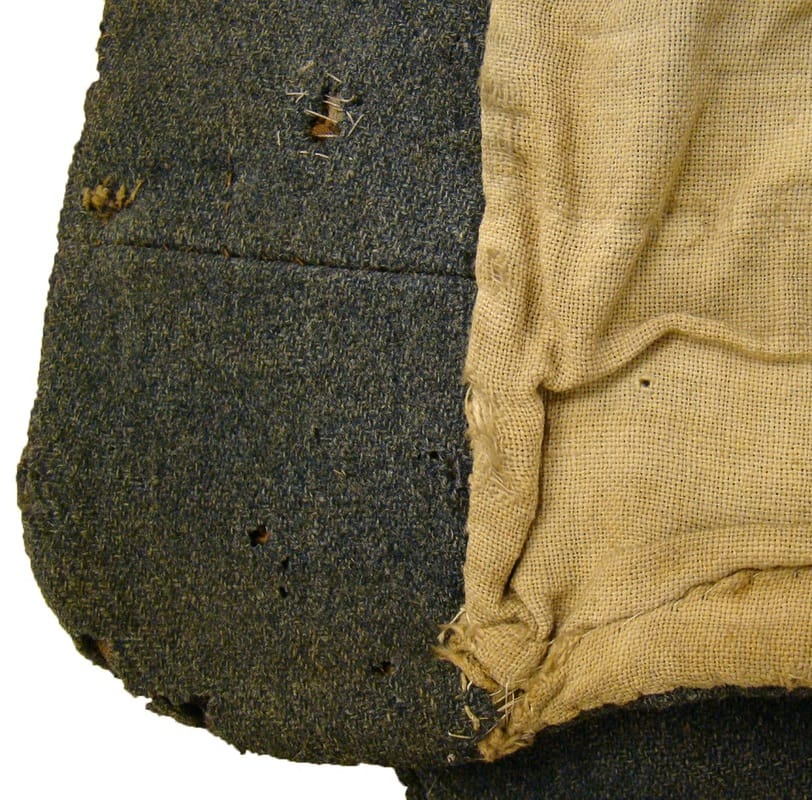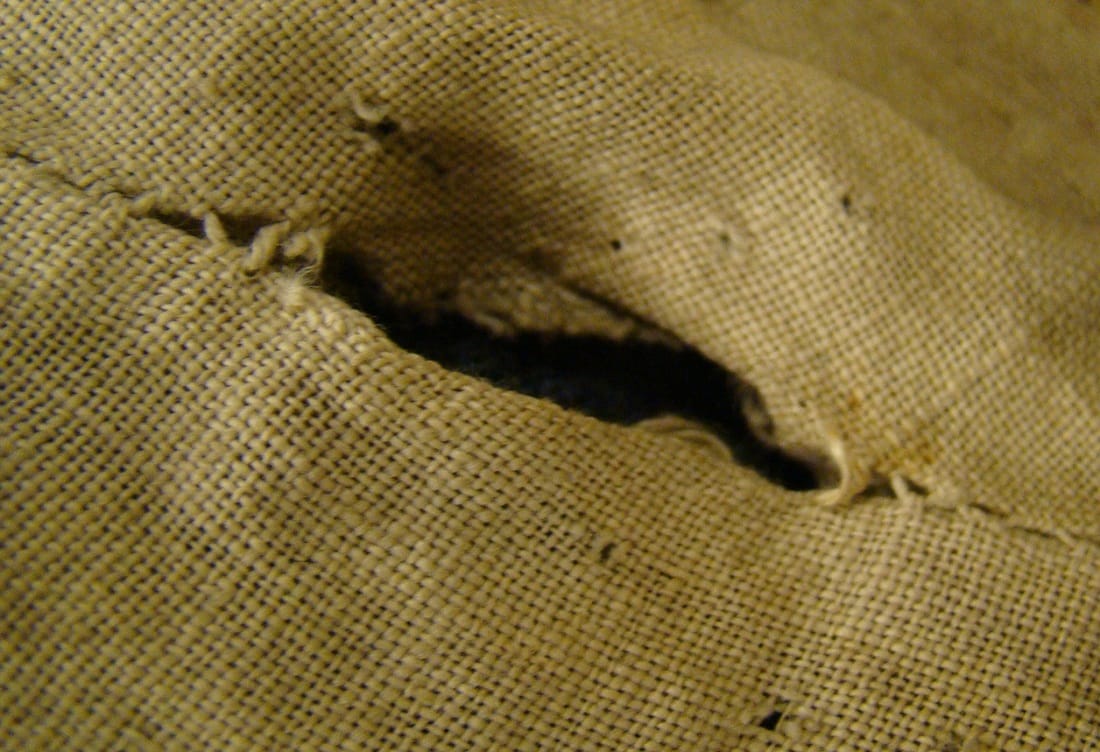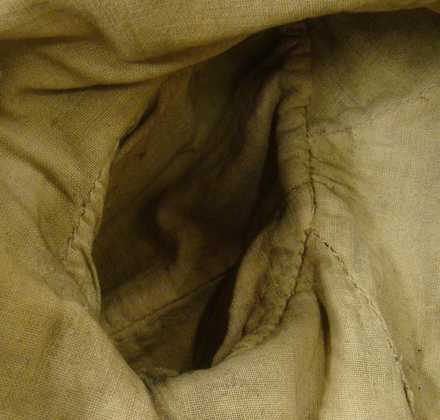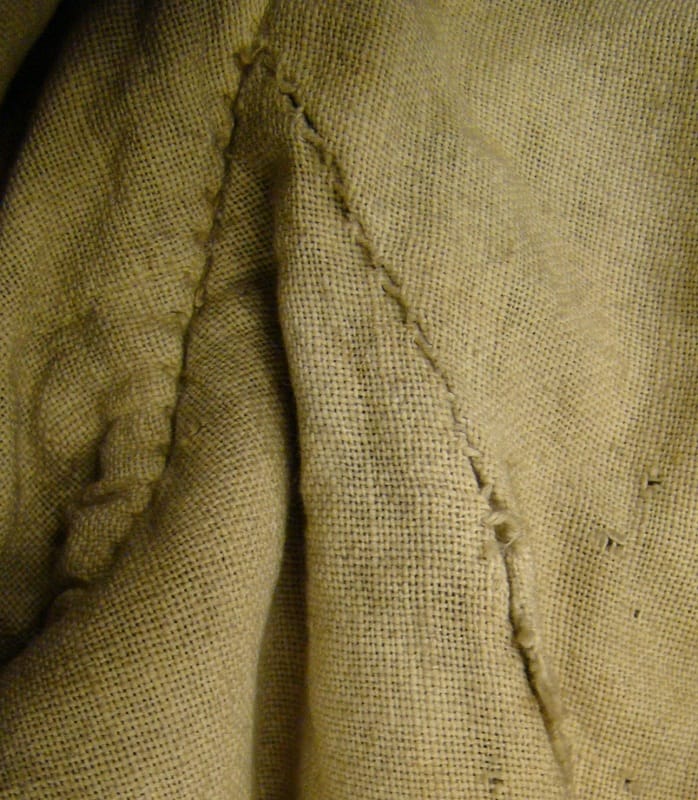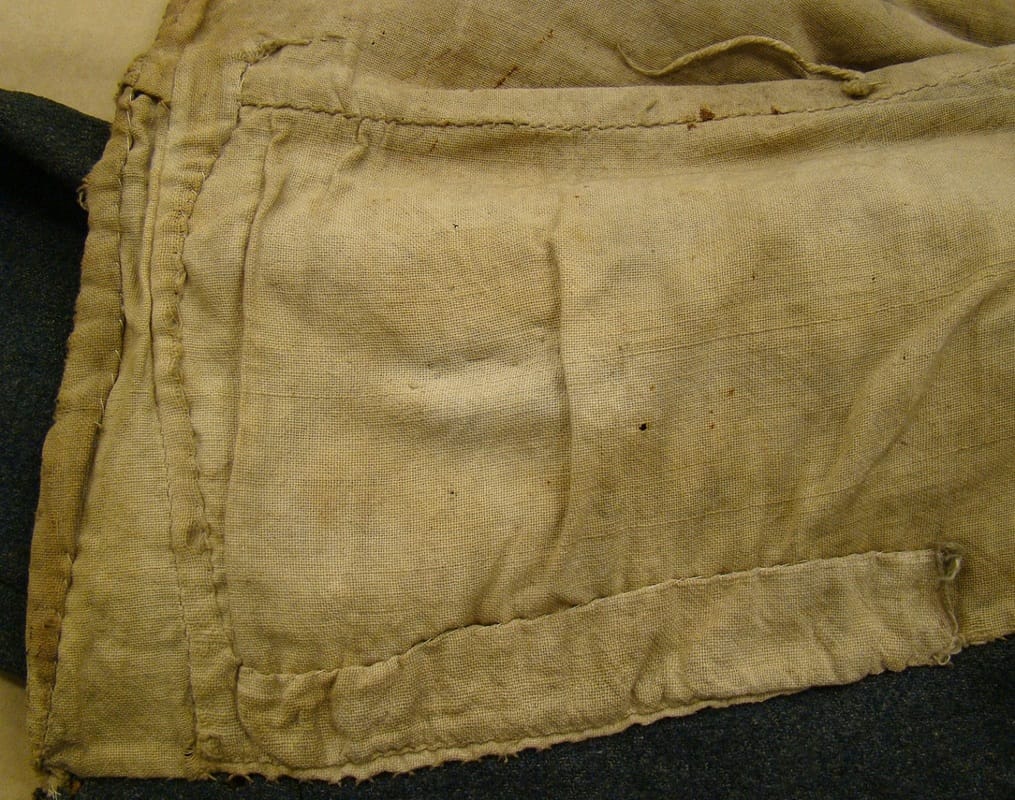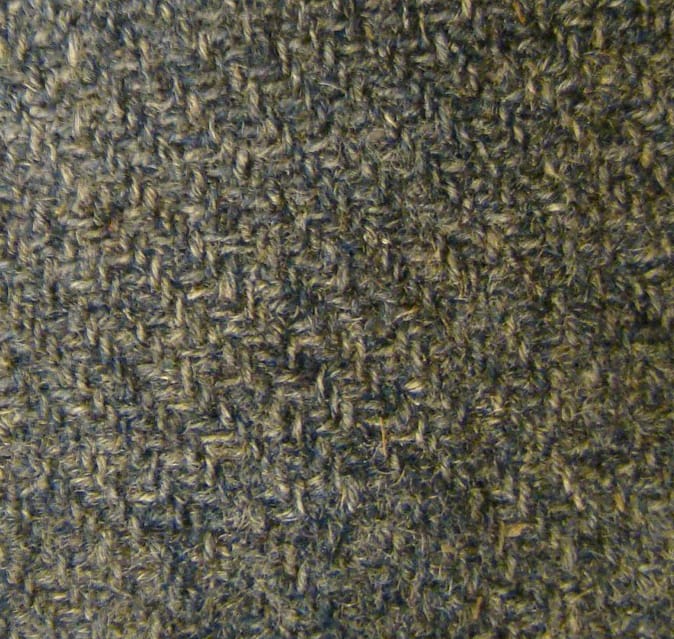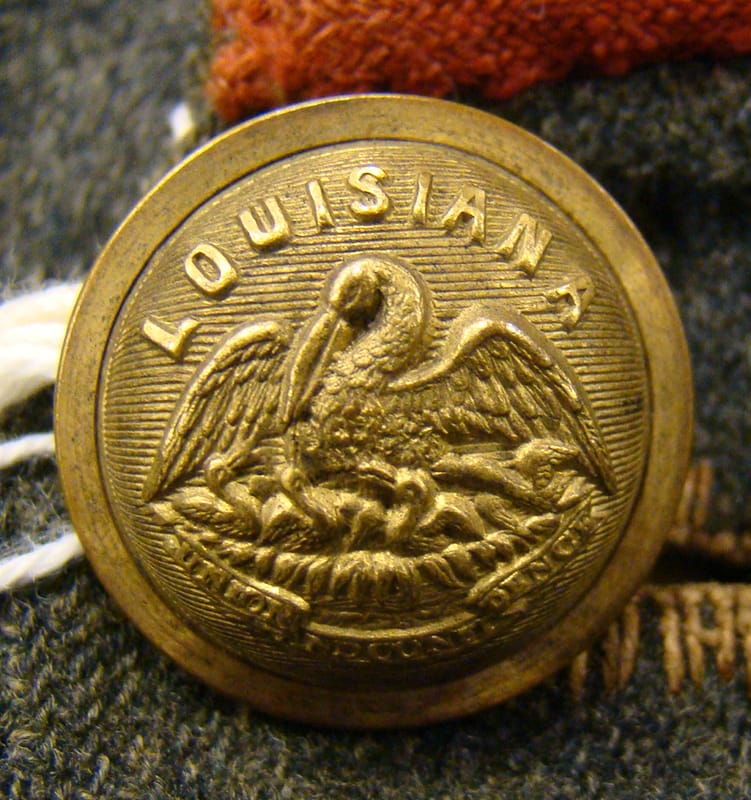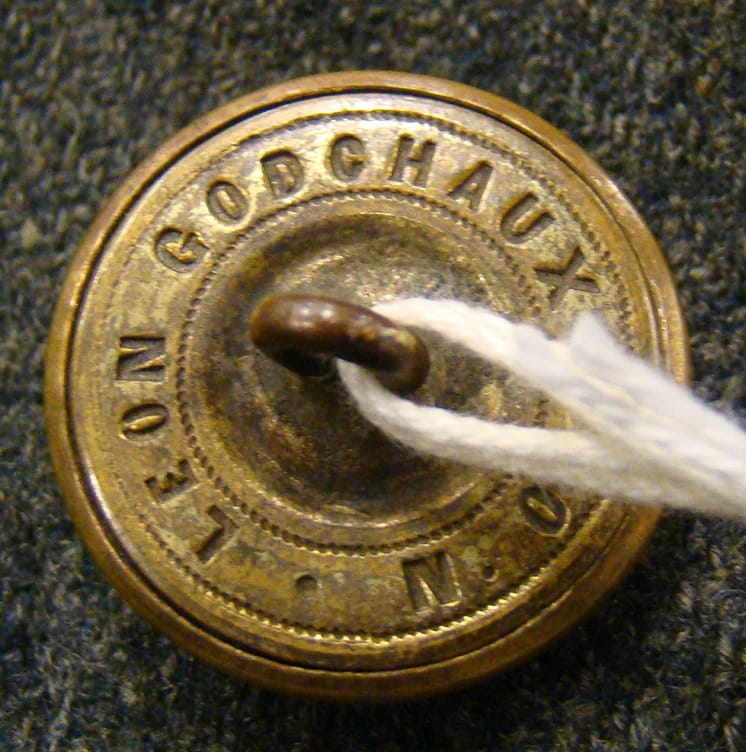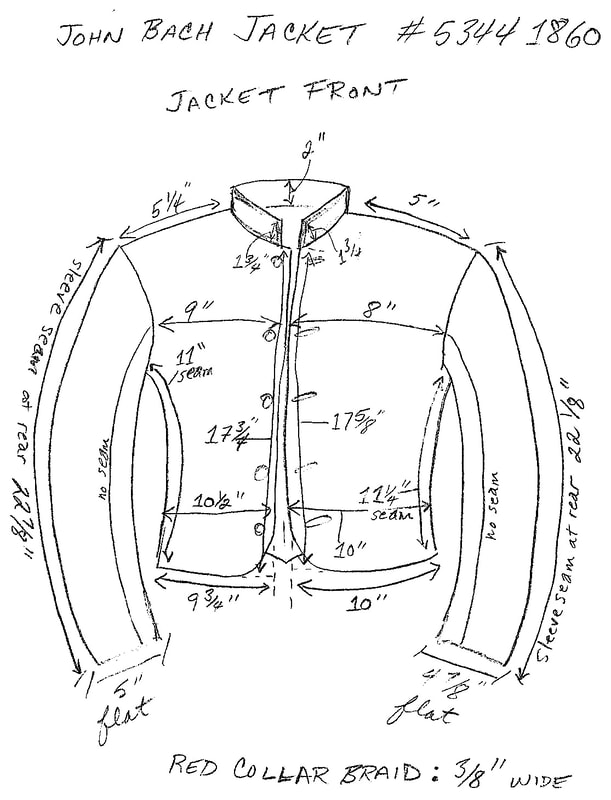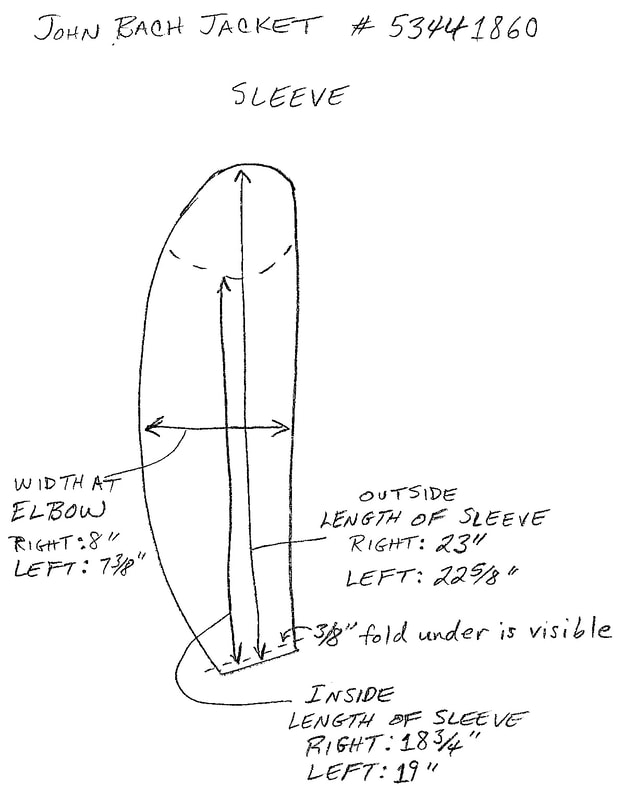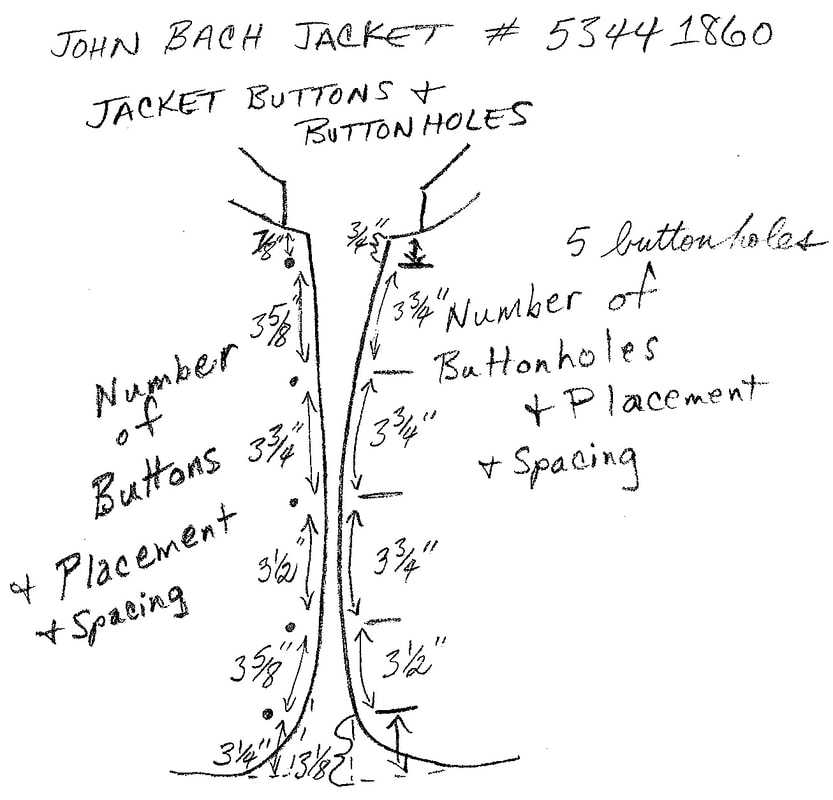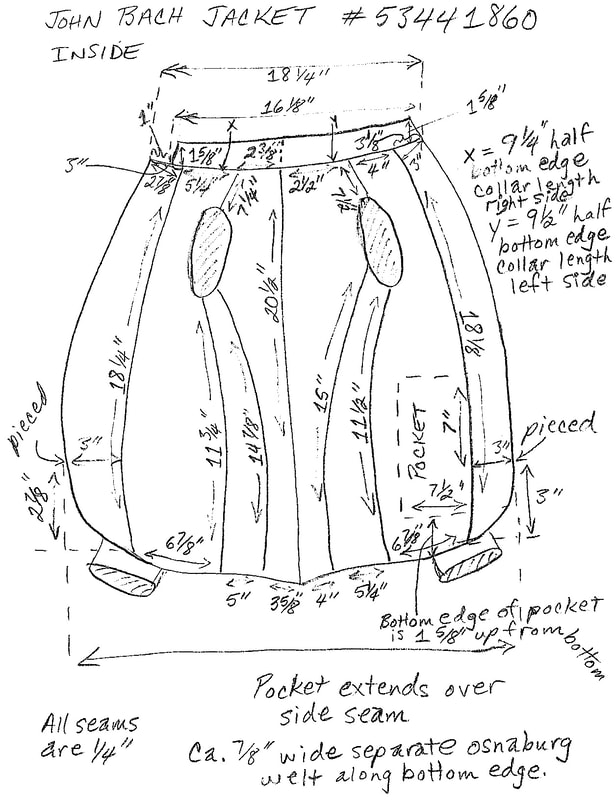John Calhoun Back Jacket: Trans-Mississippi Soldier with a Charleston Depot Jacket
by Fred Adolphus, 18 January 2023 (updated 20 April 2023)
After searching for twenty-four years, from 1986 until 2010, I thought that I had finally found a fully documented, cadet gray, Trans-Mississippi, Confederate depot jacket in the collection of the Louisiana State Museum. When I did the research, everything added up: the service records, as well as the descriptions of the jackets at the Houston Depot, Clothing Bureau. Alas, new information has come to light that proves that my pride-and-joy, my “one-and-only” Trans-Mississippi jacket was a Charleston Depot jacket all along. Here is my confession and my sad tale.
It all started with the discovery of a bonafide, Confederate gray, depot-made jacket, tied to a Trans-Mississippi soldier. The soldier, however, had a mixed service record, and his wife's name was improperly spelled in the museum accession records. To start with, the jacket's donor, Mrs. John C. Bach (spelled BACH instead of BACK) was a New Orleans resident when she gave to jacket to the museum in 1916. This misspelling led me astray.
Going into the Confederate Compiled Service Records, back in 2010, I was only able to locate one Confederate soldier with a name close to "John C. Bach." That record was for Private John Bach, a 41-year-old blacksmith, and native of Nassau, Germany, who had enlisted in Monroe, Louisiana, and served in Company A, 31st Louisiana Infantry. Furthermore, the service record appeared to describe two, entirely different men. Most of the service record recounted to service of the German immigrant, John Bach. Yet, the archivist's notes on some of the pages referred to the service of the husband of a Mrs. John C. Bach, whose husband's name was John Calhoun Back (spelled BACK). The wife had written a letter to the government in 1917 requesting her husband's service records. In this letter, she claimed that her husband, John Calhoun BACK, had served in a Louisiana cavalry command and in the Confederate Signal Corps. I was not able to find any such records at that time, so I dismissed the wife's claims, and assumed the compiled service records for John Bach were the bonafide records. I also rationalized that the middle name "Calhoun" might have been adopted after Bach got to Louisiana. All my assumptions proved false, once I discovered the Patrick William Farrell, Charleston Depot jacket. I re-opened the service records, discovered some newly published files on Fold3.com, and determined the true identity of the jacket's owner.
Indeed, John Calhoun Back owned the jacket. He was a 23-year-old resident of New Orleans in 1861, and his entire Confederate service had been in Louisiana. From March through November 1861, he had served as a clerk in the Post Office Department. He was then assigned to the Medical Department, were he remained until 1864. Back joined Captain Joseph Benjamin’s Independent Company, Louisiana Cavalry on 15 January 1864, and served as a courier until he was captured on 10 May 1864. He reported to his captors that he served in the “Signal Corps of Taylor’s Army.” Back remained a prisoner until his parole on 15 May 1865.
Although John Calhoun Back was a bonafide, Trans-Mississippi soldier, it is doubtful that his jacket was made in Trans-Mississippi Depot. I have to come to this painful conclusion because the jacket is a one-for-one match with the Farrell jacket, which does have a strong Charleston provenance, and matches other Charleston jackets, as well, (see http://adolphusconfederateuniforms.com/confederate-uniforms-of-the-lower-south-part-iv-atlantic-seaboard.html). A likely scenario for Back's jacket is that he acquired it while in prison, and that it is indeed a Charleston Depot jacket. I had grudgingly suspected this to be the case all along, but I could not bring myself to draw this conclusion, especially since enough facts supported my wished-for hypothesis. Well, the truth came out in the end.
Regarding the jacket itself, it follows the typology of the Charleston Depot jacket established by renowned uniformologist, Les Jensen, back in 1989. It has five buttonholes on the left lapel, one-piece sleeves, a six-piece body, and a two-piece collar. The bottom of the back seam comes to a distinct point. The jacket is lined with unbleached cotton osnaburg. The most notable feature that resembles the Charleston jacket is the “plumb edge” of the collar and left front lapel. It lacks belt loops, which some Charleston jackets have, but the Farrell jacket does not. The Back jacket collar also had the same three-eighth inch wide, red woolen braid sewn completely around the edge of the collar, that the Farrell jacket has. All of the original, wartime buttons are missing from the jacket. It has only a single button: a postwar, Louisiana pelican button.
It has not been comfortable retracting my finding on this jacket. Eating crow never is. I have been set back to square-one on finding the ever allusive, Trans-Mississippi Confederate, depot jacket. A small consolation is that there are at least many good descriptions, and plenty of photos and color sketches of Trans-Mississippi uniforms. At any rate, this retraction sets to record straight. John Calhoun Back brought a Charleston jacket home from his prison time, and it is a wonderful piece of Confederate history preserved. We can still enjoy it for what it is.
Before closing this study out, I want to address the concerns of all of my living-history enthusiasts who have embraced the Bach jacket as the quintessential Trans-Mississippi, enlisted depot jacket. Since I first published this study in about 2010, many reenactors have made the Bach jacket a core element in their Trans-Mississippi impression (including me). While critics can parse this jacket as being incorrect for the Trans-Mississippi, I disagree with them. The Bach jacket is as good as any original, Confederate gray jacket to use for a Trans-Mississippi impression. The major depots of the Trans-Mississippi, to include Houston, San Antonio, Little Rock, and Shreveport-Monroe, all made Confederate gray jackets and trousers. It is well documented that many of the jackets were made with five-button fronts, as attested in the Houston quartermaster records and in numerous, provenanced photographs of Trans-Mississippi soldiers. No one who wears a Bach jacket is in any way incorrect in his Trans-Mississippi impression since the Bach jacket embodies all of the essential traits of the typical, depot-made jacket from that region.
My sincere thanks go out to the Louisiana State Museum, and especially to Mr. Wayne Phillips, Curator of Costumes and Textiles, for his time and patience involved with my research. Readers are reminded that the images depicted herein are the property of Adolphus Confederate Uniforms, are under copyright, and my not be reproduced without the consent of the author.
It all started with the discovery of a bonafide, Confederate gray, depot-made jacket, tied to a Trans-Mississippi soldier. The soldier, however, had a mixed service record, and his wife's name was improperly spelled in the museum accession records. To start with, the jacket's donor, Mrs. John C. Bach (spelled BACH instead of BACK) was a New Orleans resident when she gave to jacket to the museum in 1916. This misspelling led me astray.
Going into the Confederate Compiled Service Records, back in 2010, I was only able to locate one Confederate soldier with a name close to "John C. Bach." That record was for Private John Bach, a 41-year-old blacksmith, and native of Nassau, Germany, who had enlisted in Monroe, Louisiana, and served in Company A, 31st Louisiana Infantry. Furthermore, the service record appeared to describe two, entirely different men. Most of the service record recounted to service of the German immigrant, John Bach. Yet, the archivist's notes on some of the pages referred to the service of the husband of a Mrs. John C. Bach, whose husband's name was John Calhoun Back (spelled BACK). The wife had written a letter to the government in 1917 requesting her husband's service records. In this letter, she claimed that her husband, John Calhoun BACK, had served in a Louisiana cavalry command and in the Confederate Signal Corps. I was not able to find any such records at that time, so I dismissed the wife's claims, and assumed the compiled service records for John Bach were the bonafide records. I also rationalized that the middle name "Calhoun" might have been adopted after Bach got to Louisiana. All my assumptions proved false, once I discovered the Patrick William Farrell, Charleston Depot jacket. I re-opened the service records, discovered some newly published files on Fold3.com, and determined the true identity of the jacket's owner.
Indeed, John Calhoun Back owned the jacket. He was a 23-year-old resident of New Orleans in 1861, and his entire Confederate service had been in Louisiana. From March through November 1861, he had served as a clerk in the Post Office Department. He was then assigned to the Medical Department, were he remained until 1864. Back joined Captain Joseph Benjamin’s Independent Company, Louisiana Cavalry on 15 January 1864, and served as a courier until he was captured on 10 May 1864. He reported to his captors that he served in the “Signal Corps of Taylor’s Army.” Back remained a prisoner until his parole on 15 May 1865.
Although John Calhoun Back was a bonafide, Trans-Mississippi soldier, it is doubtful that his jacket was made in Trans-Mississippi Depot. I have to come to this painful conclusion because the jacket is a one-for-one match with the Farrell jacket, which does have a strong Charleston provenance, and matches other Charleston jackets, as well, (see http://adolphusconfederateuniforms.com/confederate-uniforms-of-the-lower-south-part-iv-atlantic-seaboard.html). A likely scenario for Back's jacket is that he acquired it while in prison, and that it is indeed a Charleston Depot jacket. I had grudgingly suspected this to be the case all along, but I could not bring myself to draw this conclusion, especially since enough facts supported my wished-for hypothesis. Well, the truth came out in the end.
Regarding the jacket itself, it follows the typology of the Charleston Depot jacket established by renowned uniformologist, Les Jensen, back in 1989. It has five buttonholes on the left lapel, one-piece sleeves, a six-piece body, and a two-piece collar. The bottom of the back seam comes to a distinct point. The jacket is lined with unbleached cotton osnaburg. The most notable feature that resembles the Charleston jacket is the “plumb edge” of the collar and left front lapel. It lacks belt loops, which some Charleston jackets have, but the Farrell jacket does not. The Back jacket collar also had the same three-eighth inch wide, red woolen braid sewn completely around the edge of the collar, that the Farrell jacket has. All of the original, wartime buttons are missing from the jacket. It has only a single button: a postwar, Louisiana pelican button.
It has not been comfortable retracting my finding on this jacket. Eating crow never is. I have been set back to square-one on finding the ever allusive, Trans-Mississippi Confederate, depot jacket. A small consolation is that there are at least many good descriptions, and plenty of photos and color sketches of Trans-Mississippi uniforms. At any rate, this retraction sets to record straight. John Calhoun Back brought a Charleston jacket home from his prison time, and it is a wonderful piece of Confederate history preserved. We can still enjoy it for what it is.
Before closing this study out, I want to address the concerns of all of my living-history enthusiasts who have embraced the Bach jacket as the quintessential Trans-Mississippi, enlisted depot jacket. Since I first published this study in about 2010, many reenactors have made the Bach jacket a core element in their Trans-Mississippi impression (including me). While critics can parse this jacket as being incorrect for the Trans-Mississippi, I disagree with them. The Bach jacket is as good as any original, Confederate gray jacket to use for a Trans-Mississippi impression. The major depots of the Trans-Mississippi, to include Houston, San Antonio, Little Rock, and Shreveport-Monroe, all made Confederate gray jackets and trousers. It is well documented that many of the jackets were made with five-button fronts, as attested in the Houston quartermaster records and in numerous, provenanced photographs of Trans-Mississippi soldiers. No one who wears a Bach jacket is in any way incorrect in his Trans-Mississippi impression since the Bach jacket embodies all of the essential traits of the typical, depot-made jacket from that region.
My sincere thanks go out to the Louisiana State Museum, and especially to Mr. Wayne Phillips, Curator of Costumes and Textiles, for his time and patience involved with my research. Readers are reminded that the images depicted herein are the property of Adolphus Confederate Uniforms, are under copyright, and my not be reproduced without the consent of the author.
Artifact courtesy of the Louisiana State Museum, New Orleans, Louisiana; see also the Compiled Service Records for Louisiana, M320, Roll 362, John Bach, Company A, 31st Louisiana Infantry; CSR Louisiana, M320, Roll 30, J.C. Back, Captain Benjamin’s Company, Louisiana Cavalry; CSR Confederate, M258, Roll 116, J. Calhoun Back, CSA Signal Corps.
This website and its content is copyright of Adolphus Confederate Uniforms.
© Adolphus Confederate Uniforms 2010-2021. All rights reserved.
Email us | Copyright | Disclaimer | Terms of Use | PDF Download Help
|
|
|
